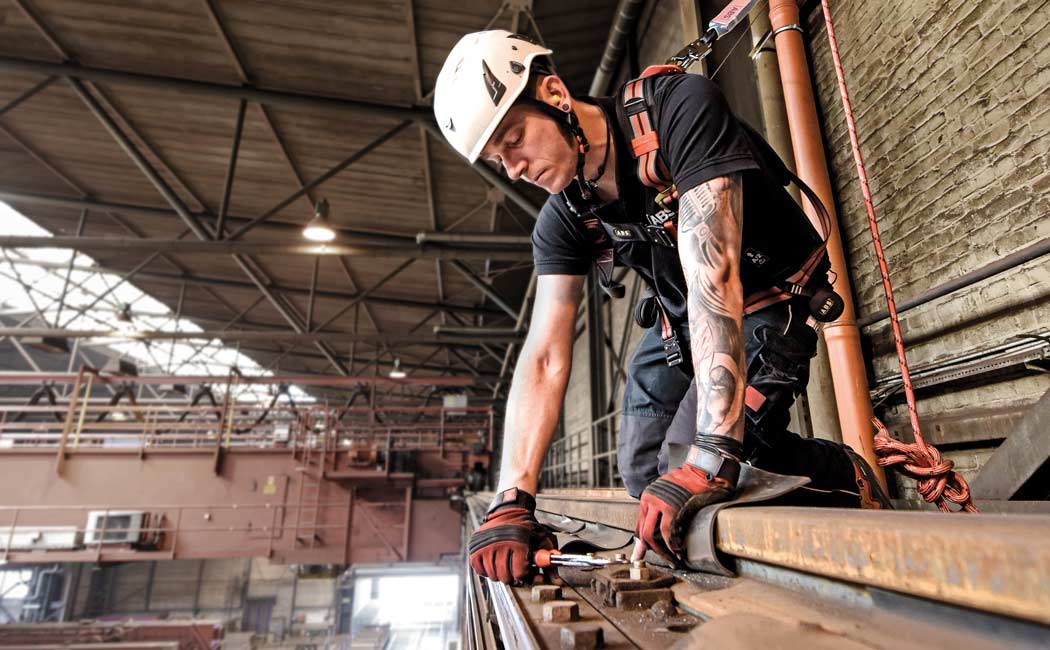Topics
- General terms
- Fall danger zone
- Falling edge
- Fall arrest for individuals
- Working alone
- General type approval
- Anchorage device
- Anchorage option
- Working on mobile elevating work platforms
- Arresting system
- Fall-through resistant
- Single anchorage point (anchor)
- Familiarisation
- Enclosed space
- Flat roof safety system
- Risk assessment
- Suspension trauma
- Swing fall
- Rescue concept
- Retention system
- Secondary fall arrest system
- Roof safety hook
- Safety and Occupational Health Coordinator (German: "SiGeKo")
- Thermal isolation
- Anchorage device inspections
- Training
- abZ & DIBt
- DGUV - German statutory accident insurance
- Collective protection
- Standards & regulations
- PPE
- Safety systems
- Access Technology
General terms
Falling edge
A falling edge is the edge over which an individual could fall. From a fall height of 1 m and upwards, there is always a risk of falling. At lower heights, or when you are working adjacent to a substance into which you could sink, a risk assessment must be carried out to determine whether there is a risk of falling or sinking and which protection measures need to be implemented to counteract these risks.
What is the definition of a falling edge?
In the German technical rules for workplaces, ASR A2.1 , four different situations are mentioned to illustrate what constitutes a falling edge:
- Edge between a flat surface and a surface with a pitch of over 60° (example: the outer edge of a flat roof)
- Transition between a fall-through-resistant and a non-fall-through-resistant surface (example: domed skylight)
- Edge between a surface with an angle of inclination of less than 20° and a surface with a pitch of over 60° (example: a mansard roof)
- Position on a curved surface from which the angle of inclination of the tangent plane is greater than 60° (example: barrel roof)

